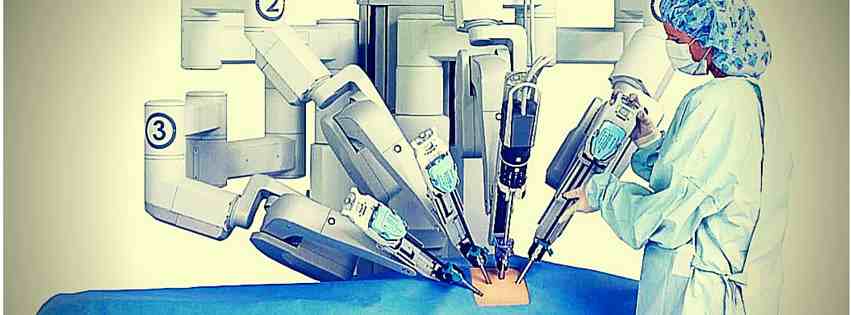Most people aren’t kept up at night for fear of a robot apocalypse – but, in our economically unstable society, many people do worry about their future employment. Robots and AI aren’t yet dominating our lives but they are taking our jobs.
When Andy Haldane, the Bank of England’s chief economist, spoke to Britain’s trade unions collective, the TUC, Haldane was asked about labor security against and the old Luddite practice of smashing machines during the Industrial Revolution. In his response, Haldane quoted some disconcerting data from his institution’s recent study, which pegged some 15 million jobs as at potential risk of automation. To be sure, Haldane referred to the BOE’s results as a “broad brush” estimate, but that does little to comfort the 28% of Brits who fall within the “at risk” category.
The most obvious robot replacements appear around places we frequent. Grocery stores with self-checkout computers or budget airlines sans manned check-in counters. But labor in less visible positions is increasingly being supplemented and often substituted by automated machines. Most airplanes – even commercial planes – rely so heavily on autopilot that trained pilots can essentially kick back and relax as an Airbus lands itself in dense fog. Online and telephone marketers are being outsourced to other countries and even insentient beings. Likewise the robots below might have you reconsidering your career paths.
RAY the valet and Motobot the biker
To valet is to trust. It’s tough to hand your keys to a total stranger and expect to get your car back in the same condition you’d left it. A changed radio station or an adjusted seat remind you someone else was there. If any of this unnerves you you’ll be glad to hear that human valets may one day be no more. If you’re a valet, you may be unnerved to hear about Dusseldorf airport’s robot valet service. Created by Germany’s Serva Transport Systems, RAY the robot valet was designed for business travelers who want to jet in and out without worrying about parking.
Unlike flesh-and-bone valets, RAY doesn’t actually drive and park your car. He forklifts and stores it in one of 249 reserved parking spots, using lasers and sensors to determine the weight and dimensions of the vehicle for just the right fit. According to Serva Transport this specificity enables the service to save space and park 60 percent more cars than your average human valet.
Leave it to Volkswagen to evolve RAY one step further. In January Serva announced that they were partnering with the now nearly denounced “vehicle of the people” to develop VW cars which would communicate with RAY via Bluetooth. Though they didn’t detail what RAY and a Jetta might discuss, they managing director Rupert Kock explained that the systems would exchange data automatically to facilitate the parking process.
RAY is joined on the road by a robotic test driver named Motobot whose self-professed aim is to “surpass you” as it learns the ropes or motorcycle riding. Developed by Yamaha, Motobot might not be an immediate threat to drivers, but a slight stretch of the imagination can see it standing in for professional racers and stuntmen.
Wordsmith and Automated Insights
I’ve wondered if AI will be the end of journalism. And though my conclusion was a steadfast or just stubborn “No”, I can’t deny that AI technology continues to change the craft. Recent efforts have been made to develop an AI that can construct its own fictional narratives, but the most impressive feats have been made in the world of reporting. One system in particular, Wordsmith, is already purportedly capable of creating 2,000 articles per second. Companies like Comcast and Yahoo use Wordsmith to thread together short reports on sports and finances – but even organizations like the Associated Press openly employ the software to generate some 12,000 articles every year.
Wordsmith’s position at the AP is akin to an intern – it works diligently to create cut-and-dry reports on businesses’s quarterly earnings which are then reviewed and refined by editors to ensure no errors. As such the AP and Wordsmith’s developer Automated Insights insist that no journalist’s job has been lost to the system. But as the now open access system develops, it’s hard to imagine the less glamorous aspects of reporting being automated by AI.
Da Vinci in the hospital
Medicine is often thought of as an untouchable in the realm of robotic automation. Patients desire that human contact with their physician while physicians need that unique mix of training, intuition, emotion, and reason to successfully treat their patients. Nurses likewise need to juggle aspects of social interaction with science and dynamic engagement with systematic rigor which robots would find utterly overwhelming.
And yet, medicine is not entirely humanist. A six and a half foot tall, five foot wide, $3 million robot named Da Vinci can attest to that. Stationed in the Freeman hospital in Newcastle, UK the four armed Da Vinci doesn’t look human and indeed performs surgeries – from heart bypass operations to cancer removal – to a degree any mortal man couldn’t achieve. Da Vinci needs a trained surgeon to direct its movements but the machine stands is extraordinary in its precision, revolutionizing the way surgeries are performed. With instruments that can rotate 360 degrees and respond in ways that human hands can’t, the robot allows surgeons to access parts of the body that would otherwise be out of reach.
Credits: Mark Clifford/Courtesy of Intuitive Surgical, Inc.




















